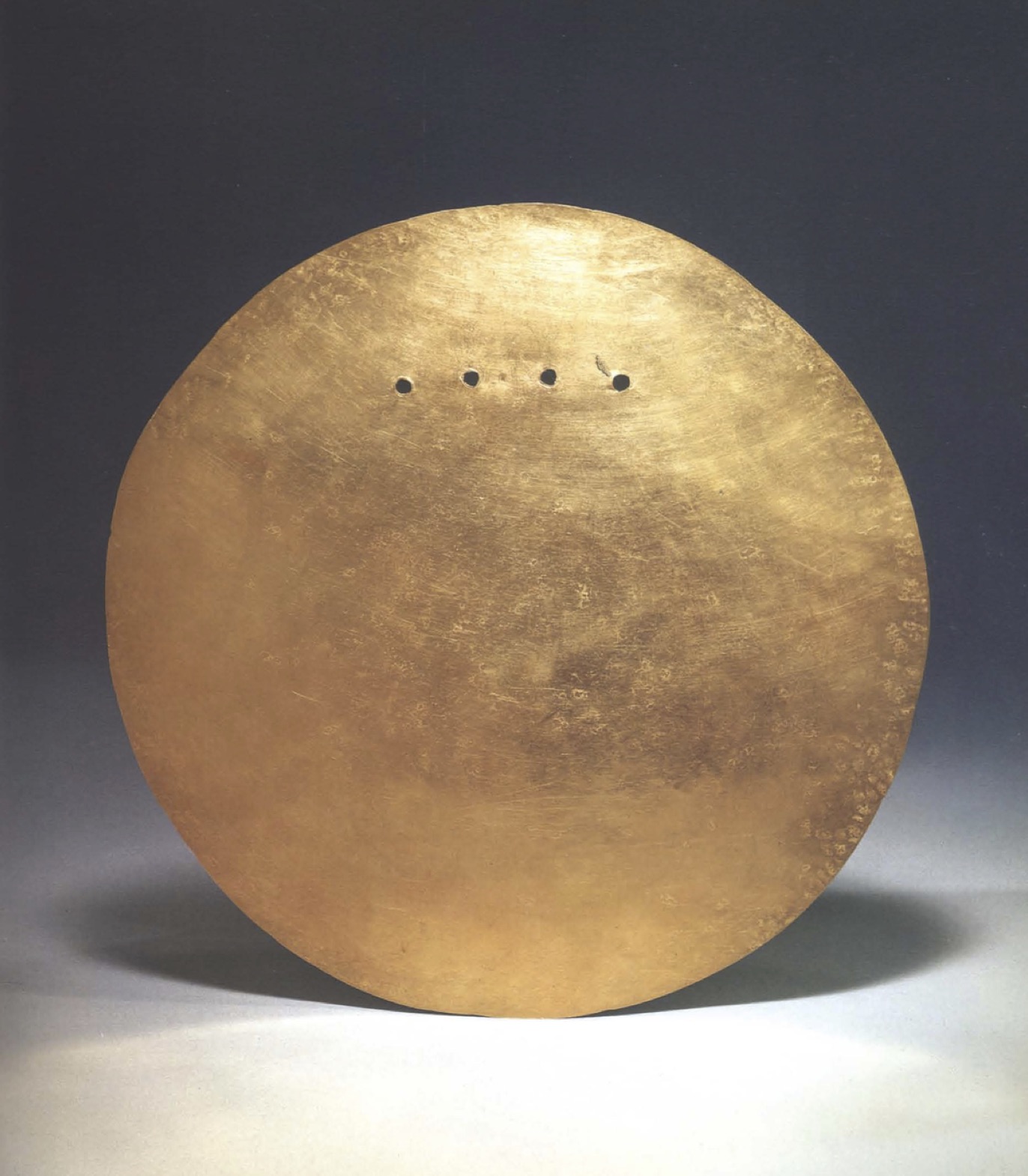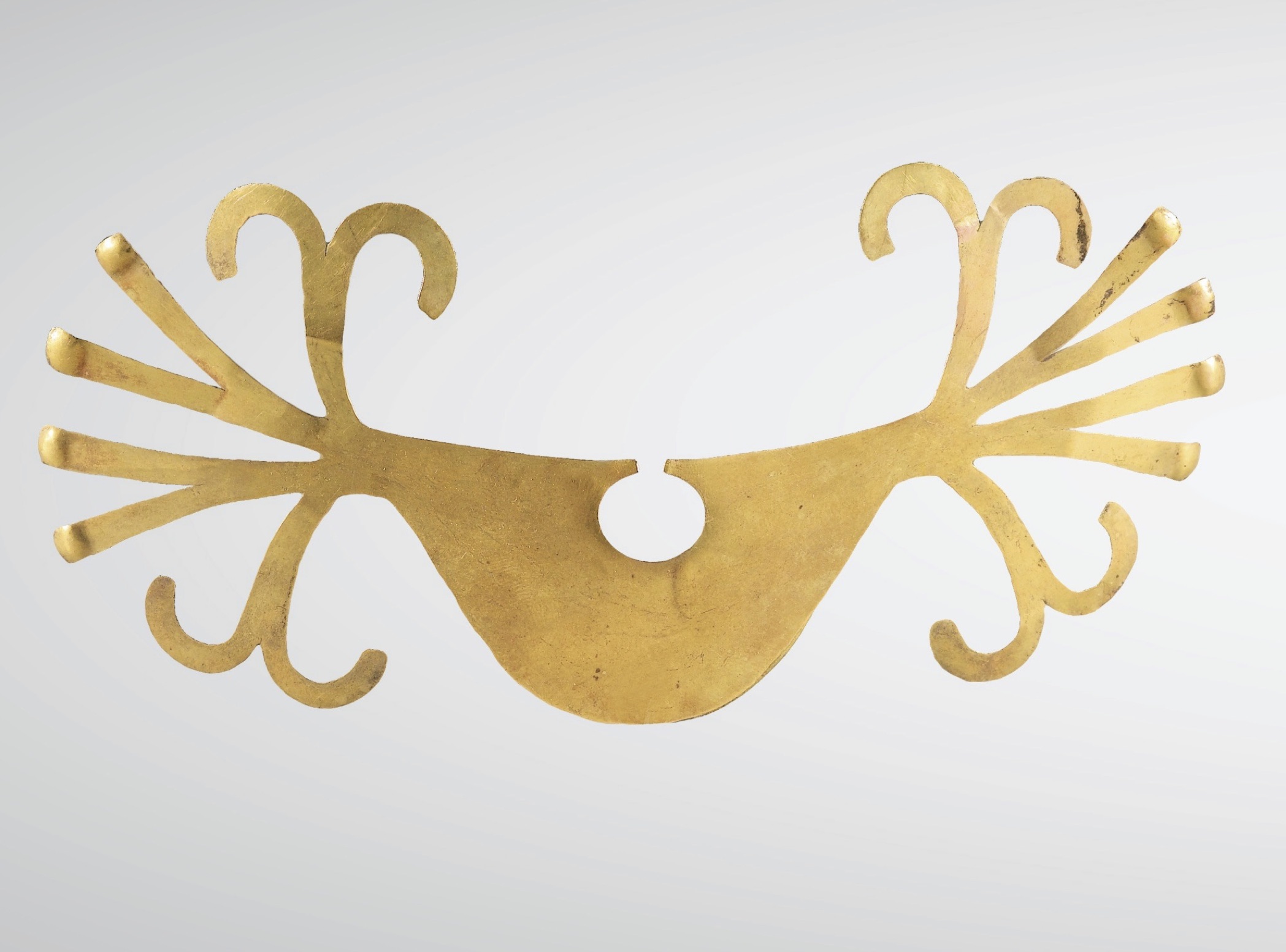sweat of the sun: pre-columbian gold
︎ Sculpture, Abstract, Culture, Religion
︎ Mudimakes
︎ Sculpture, Abstract, Culture, Religion
︎ Mudimakes
︎ Mudimakes
“Shamans adorned in gold, performed rituals to assist in spiritual transformation.”
In the lands of pre-Columbian America it was believed that worked gold was the ‘sweat of the sun’ and ‘excrement of the gods’. A highly symbolic material, it represented the sun; a source of life giving energy and creative power.
In the lands of pre-Columbian America it was believed that worked gold was the ‘sweat of the sun’ and ‘excrement of the gods’. A highly symbolic material, it represented the sun; a source of life giving energy and creative power.

For 2500 years Indigenous craftspeople hammered golden nuggets into fine sheets to be cut and
embossed creating striking, elegant and abstract forms. Conveying a close relationship between
man and nature, gold was gathered from rivers and streams and transformed into zoomorphic
headdresses, pectoral, ear and nose ornaments to adorn the body.


Many of these intricately shaped nose ornaments transformed and disguised the wearer by
concealing the mouth and alluded to the animal kingdom. Pieces were hammered and cut to form
cat whiskers, others resemble the delicate nasal leaf of a bat. The desirable traits of the feline;
powerful, ferocious, fast and agile, and the bat with it’s heightened senses, potency and ability to
fly were embodied in gold, representing the interwoven relationship between man and animal.
Shamans adorned in gold, performed rituals to assist in spiritual transformation. These golden
objects believed to contain a life force of their own, were used along with dance and
hallucinogens to connect the wearer with animal spirits and the supernatural. Shamans would use
these animalistic and transcendental powers to protect their communities and ensure universal
balance.
The most striking and timeless forms in pre-Columbian gold, albeit the rarest to be discovered,
are from the Partial culture. Steering away from traditional designs they display no reference to
animals or humans and are composed of simple geometric shapes. Pure in form, with no two
alike, they show an innate, imaginative aesthetic among goldsmiths of the time. Timeless in
design, large, burnished, spherical pectorals and simple semi circular nose ornaments perhaps
suggest the disc of the sun, the cycle of life and fertility.


Many of these exquisite golden objects were seized by the Spaniards in the early 16th century
and melted down into ingots or coins. Unfortunately to the Spaniards the worth was in the gold
alone. To the indigenous peoples the symbolic nature of each masterfully crafted creation brought
great power and meaning to the material. Without this art, gold was comparative to a lump of clay.
These ancient artefacts exist as reminders of how culture, religion, art and nature were once so intertwined. The natural world and the creative forces of these peoples, as well as the awe and respect they had for their environment brought a closeness and understanding to the universe that we exist within (and is us).
These ancient artefacts exist as reminders of how culture, religion, art and nature were once so intertwined. The natural world and the creative forces of these peoples, as well as the awe and respect they had for their environment brought a closeness and understanding to the universe that we exist within (and is us).

